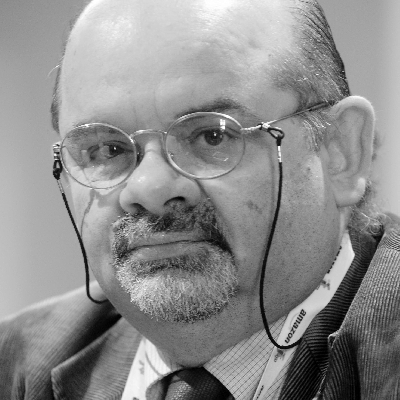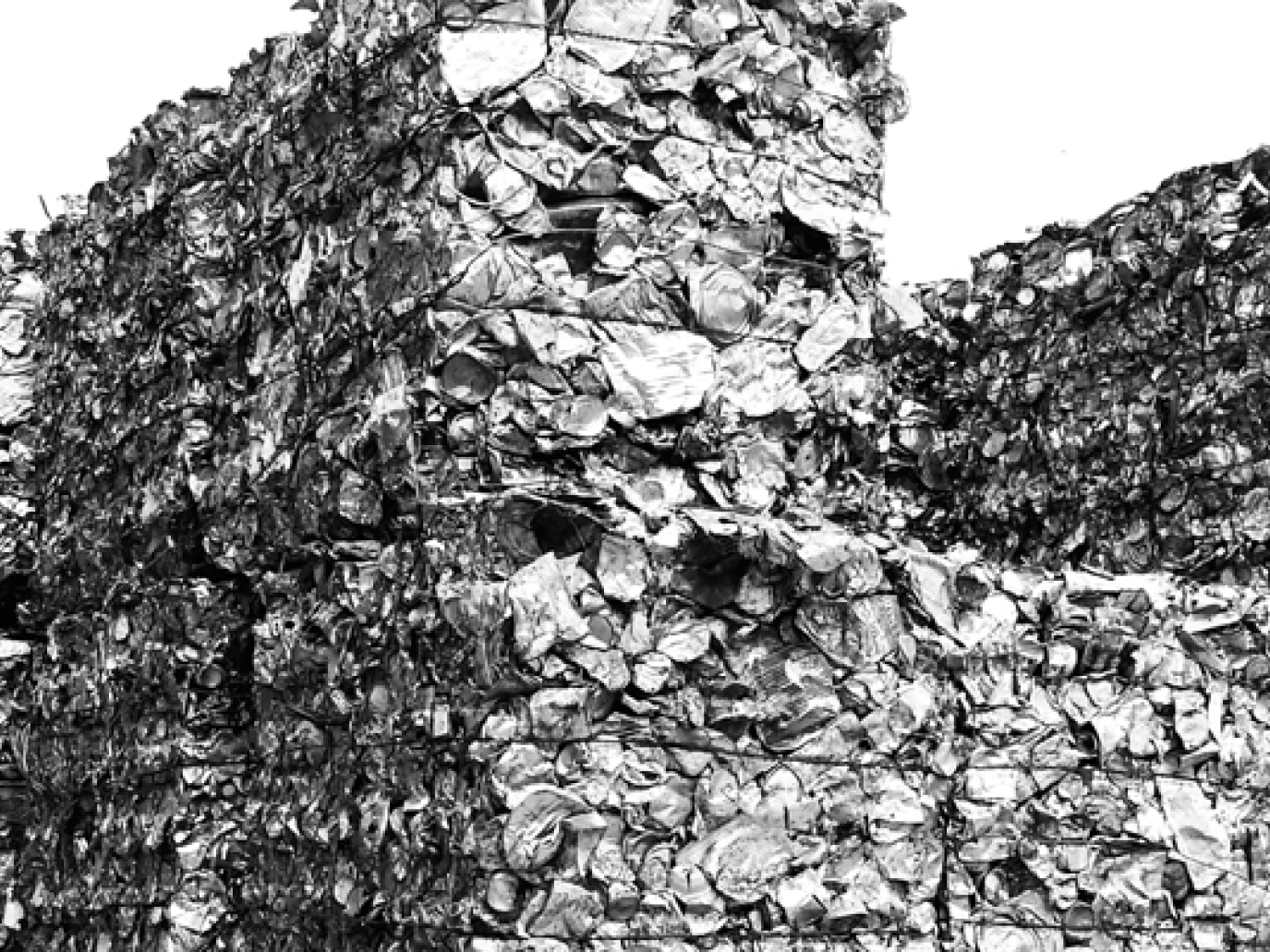It’s easy to talk about the circular economy. The moment waste is recycled, we start talking about the circular economy. Such statement, to be fair, can be defined as superficial. The apparent simplicity of the production of goods, together with massive availability of raw materials that has characterized the whole industry up until now, has led us to regard recycling as an equally simple activity. But this approach is wrong.
Instead, production chains, considering just the manufacturing aspect, are very complex, stratified and rational, and their complexity soars when they attempt to close the cycle using secondary raw materials as resources. Indeed, the cycle loses its rationality when the complexity contained in the product meets the sociological one of the use and its turning into waste.
This is chaos. Materials combined on the bases of random classifications, energy used irrationally and “moody” lifestyles are the ingredients making up such chaos, for decades hidden underground. Namely landfills. Today the unsustainability of such logic is being perceived in the actions and the mission impossible of waste rationalization through separate waste collection and recycling is being attempted.
A first experience does not come from a manufacturer but rather from Gruppo Veritas, Veneto’s major multiutility dealing with waste and water resource management: for the first time, in Europe and perhaps in the world, it certified waste cycle, from separate waste collection to the supply of secondary raw materials to companies, monitoring all stages in detail taking into account energy and environmental aspects.
“Certification by a third party (Bureau Veritas: a certifying body that only by chance share part of its name with the Veneto multiutility, editor’s note) – notes Andrea Razzini, general director for Gruppo Veritas – serves two purposes. First, because it addresses one of the doubts citizens have with regard to waste, namely that their effort for the separate waste collection is pointless, in the conviction, (profoundly wrong), that at a later stage multiutilities mix everything again. The second, is that through the mechanism of certification and monitoring we can improve the quality of the secondary raw material we produce.”

Certification. We need to understand, though, that we are not talking about stamps and red tape, or of a piece of paper obtained for whatever purpose, but about documents containing substantial information with scientific methodologies that cannot be “interpreted”, because when we talk about industrial processes and about supplies of raw materials to companies, the truth will always come out. Always. But this is not the case for Veritas that certified most of its supply chains/platforms – glass, steel, aluminium, paper, plastic, SDF (Solid-derived fuel) – and it is also considering wet waste certification. Here we are faced with the complexity and chaos of what we call waste.
Plastic is a good case in point. “Plastic, in the singular – carries on Razzini – is just a word. The correct lexical item is plastics because there are thousands of them, which complicates things. The chains for the transformation of waste into secondary raw materials are not at all simple or easily accessed. So, people not used not separate waste at source not only had to learn to separate waste, but also take it upon themselves to ascertain the quality of secondary raw materials because companies having to process them demand excellent quality material according to certain needs.”
Indeed, secondary raw materials, must simply match, both qualitatively and economically, raw materials, if they aim to enter the current manufacturing circle. Most probably, certification is the main way to achieve this.
A Transparent Idea
Within Veritas, the idea of chain/platform certification originated on glass in order to understand, in the first place, what happens along a specific recycling chain with regard to collection and selection, up to the furnace. The choice of such supply chain for experimentation was carried out not only because it is Veritas’ most complete one – thus allowing close analysis – but also because the company identified in glass a secondary raw material which is an excellent carrier of information towards citizens.
“We chose glass as first experimentation of supply chain traceability/platform (essential action and introductory to certification, editor’s note), taking separate waste collection from some municipalities of the mainland (Venice, editor’s note) and analysing glass collected in banks, kilo by kilo,” tells us Giuliana Da Villa, Veritas quality and environment manager. “Also, the glass-making company’s factual collaboration was necessary. We asked them to melt our glass in only one furnace; for a week that furnace only melted our glass, turning it into bottles.”
It could seem a small thing, to be taken for granted but it is not. Every industrial entity belonging to any production chain has its own industrial dynamic and willingness to “stop” part of the production to check on the whole production chain, involving third parties too. So, it is not at all to be taken for granted, especially when we are talking about a multinational.

After all, without such step, the supply chain data, especially from an energy viewpoint, would have had obvious gaps, which is why collaboration of end companies is crucial. It is essential to get to know such data for the recycling chain, but companies’ secrecy is understandable. Their disclosure of greater efficiency of a company’s process, for instance, can eliminate its own competitive advantage, but at the same time such data would be needed in order to make the recycling chain more efficient. In search of such balance, certification carried out by Veritas is extremely useful. While data are available, details are not disclosed, because it is the recycling process as a whole that is being certified.
Finally, once the data were in, Veritas thought how to communicate them to citizens, in order also to deny the cliché about the transformation of separated waste into mixed waste by multiutilities. And it literally launched the message in bottles distributed to citizens stressing the fact that just a few weeks earlier those very bottles were glass waste disposed of into glass banks. A clear signal: waste has been turned into a useful object.
The glass experiment paved the road to the certification of five more supply chains. They include solid-derived fuel (SDF) that is undoubtedly one of the most controversial secondary raw materials because the public opinion associates it with incineration while it is an actual fuel that when meeting certain parameters is no longer waste. The analysis carried out for SDF certification revealed some important questions about supply chains/platforms such as types and quantities of wrong disposal and about the company itself.
It highlighted for examples some problems regarding the monitoring of energy used by vehicles in the collection phase due to the fact that data are not gathered in the same way in the different areas where they operate, a classical example of “stratification” over time of business practices. On the quality front, the process has passed with flying colours the planning skills of the Ecoprogetto Venezia plant, the subsidiary of the group dealing with SDF, which can guarantee, thanks to the technology and operating practices adopted, the production of SDF meeting the limits provided for by DM 22/2013 regarding the end of waste even with materials not suitable for recycling. So if the complexity of urban waste and its management is in the actions, for industrial waste, often mono-materials, it is rather simple to find the connection between products and secondary raw materials even for quality products. For instance, cadmium telluride solar panels, that can achieve a record efficiency of 22.1%, are made using materials from industrial waste derived from zinc and copper refining.
To get a real picture that includes also all round environmental issues, during the certification process all water, energy and other resources consumptions were taken into account, going beyond purely business aspects, such the quantity of material produced. For each supply chain/platform the lifecycle balance was accurately measured thus determining the ecological footprint of the recycling cycle starting from the citizen’s disposal to the re/finished product, such is the case with glass. Gathered indicators will be very valuable in the future since they can be used as a base for the development of the circular economy.
“During the certification process,” Da Villa explains, “we realized that the data collected were very interesting beyond communication issues and we wondered whether there were rules to do just that. So we found out that there are no international standards for traceability of recycling and so we approached an independent certification body, identified through a bid for tender, Bureau Veritas, to define data and methodologies available today.”
The NIMBY Decline
Waste management has always been exposed to the risk of NIMBY, even the most virtuous ones. While Gruppo Veritas operates in densely populated areas, there has been no citizens’ hostility against its recycling platform: this is because plants were located in suburban areas and often in sites previously used for industrial activities. And most probably this is the right strategy to build problematic plants, even virtuous ones such as recycling platforms. We must bear in mind that citizens often look at issues in the short period and do not see the advantages that such plants can bring on a larger scale. But in this case, the choice of Veritas proved successful, because besides preferring a suburban area, for some plants they chose Porto Marghera. “This option,” Giuliana Da Villa explains, “was seen by citizens as a reclamation and a redevelopment of the area due to the activities that took place there in the past. Eco-Ricicli plant, a sorting and recycling centre for glass, plastic and cans, is located on a reclaimed area. In this way we reclaim areas that could not otherwise be reclaimed.” The acceptance of the plants is also promoted by the fact that recycling is a labour-intensive activity and thus closing a cycle. New plants are built in areas were previous activities closed down thus creating new ones with lower impact and restoring jobs.
The Relationship with Businesses
The limit that emerged from this experience, glass aside, is in the relationship with manufacturers. This relationship stops at intermediate business level because these companies thanks to their specific knowledge of business practices are able to provide manufactures with the right secondary raw material for specific productions. It is a gap in the knowledge chain that complicates the optimization of the recycling process because upstream there could be a lack of important pieces of process information needed to obtain useful materials downstream. In order to overcome this very limitation, Veritas is starting an experiment: detailed traceability of plastics and aluminium deriving from waste, the company aims to provide directly manufacturers with secondary raw materials to produce playground equipment for public parks. It is an experiment that could be funded by a European call for tenders in partnership with the Municipality of Venice that will chose, through a competition, a manufacturer that will have to make this equipment solely with secondary raw materials derived from the recycling of solid urban waste through Veritas supply chain. Having chosen this use is no small feat because outdoor playground equipment is exposed to the elements, to systematic abuse by small users as well as been subjected to very strict rules and regulations. Many manufacturers are interested in the project, to test both these methods and “new” materials. Covering for the equipment will be made with granulated material derived from fruit crates, while the bearing structure in recycled aluminium. Very soon, in Venice parents will be able to tell their children that their preferred playground piece of equipment was made using the crate of the fruit for their afternoon snack and their beverage can.
Some years ago, the refrain was that “the medium is the message” (McLuhan, 1967); in the future we will be able to say “the object is the message.” To define and communicate the circular economy in the best possible way.

Info



